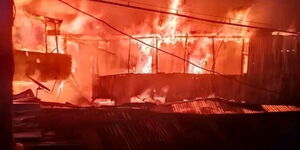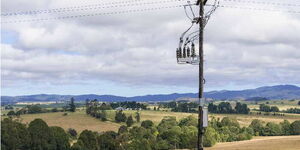As the world struggles to turn green again, many governments and environmental activists have increasingly turned towards cooking stoves as the cleanest mode of preparing meals besides electric cookers.
Compared to other modes of cooking such as firewood and charcoal, the gas is by far the least likely to emit harmful gases into the environment nor cause respiratory problems in both humans and animals.
A study released in 2022 and cited by leading media outlets like the New York Times, however, suggests that the humans may not be completely in the clear from respiratory diseases as a result of natural gas stoves, cooktops, and ovens.
1. Causing Asthma in children
The study, released in December 2022, indicated that the gas emits harmful gases called nitrogen oxides, including nitrogen dioxide.
The gas, when inhaled in a poorly ventilated room, is likely to trigger asthma especially in children whose respiratory system is still developing.
Nitrogen dioxide emitted from the natural gas stoves is said to be similar to that emanating from cars, boats and other machines.
"Co-emitted health-damaging air pollutants such as nitrogen oxides (NOx) are released into home air and can trigger respiratory diseases," read the report titled Methane and NOx Emissions from Natural Gas Stoves, Cooktops, and Ovens in Residential Homes.
Adults already suffering from asthma are also at greater risks of exacerbating their experiences.
2. Carcinogenic Benzene
Citing multiple reports, The Guardian reported January 2023 that the natural gas cookers emit harmful compounds, some times even when not in use. The compounds include benzene which is a carcinogen.
The other toxicities are xylene, toluene and ethylbenzene; all of which have been linked to respiratory diseases and even cancer.
Seth Shonkoff, an executive director of PSE Healthy Energy which conducted the study, noted that the stoves can emit enough benzene just as a cigarette.
“You can achieve the same level of benzene just from having a stove that’s off in your house as you’d expect to see as having a house with a smoker in it,” he stated.
3. Explosions
Every quarter, gas explosions are reported in Kenya more so in the Nairobi County region and its metropolis. The recent case was recorded at the beginning of August 2023.
In the incident, three people were injured when the gas cylinder exploded at Ibgaro House near Madina Mall in Nairobi’s Eastleigh area. Fatalities are often recorded in some cases.
The Energy and Petroleum Regulatory Authority (EPRA), however, continually advises Kenyans to steer clear of counterfeit gas cylinders highly likely to explode.
In a recent campaign, the authority advised customers to ensure that the hose connecting the gas cylinder to the cookers is regularly checked for cracks and users shouldn't light matchboxes near the cylinders when a leak has been detected.
Measures to Protect Self from Gas Dangers
Experts have advised that whereas natural gas cookers emit harmful gases, it does not necessarily mean that those using them can fall sick from the emissions.
To protect the entire households and their occupants, individuals are advised to ensure sufficient ventilation in spaces where the cookers are used to prepare meals.
This may be achieved by having open air and ventilators as well as turning on a vent to usher out air pollution from the kitchen. That lowers the air concentrations inside the house.
Switching to electric cookers is also a much safer option ensuring that the gas cooker is used less often.
EPRA also advises that individuals should check for dents on their cylinders which might pose an early indication of a potential gas leak.












